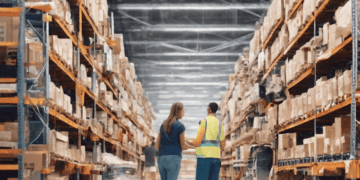In today’s digitally-driven economy, e-commerce has transitioned from a mere sales channel to an integral part of daily life. In our interconnected world, consumers engage in shopping across various platforms and access points, blurring the lines between B2B, B2C, and C2C transactions. The distinction between e-commerce and traditional commerce is becoming less relevant.
The emergence of e-commerce has transformed the retail industry, breaking down geographical barriers and transcending physical constraints. It allowed businesses to expand their sales and marketing efforts in tandem with the capacity of their supply chains. Initially, the primary challenge was keeping up with the growing demand and heightened consumer expectations regarding delivery speed.
Today’s consumers seek more than just products, value, and swift delivery. They desire an experience that resonates with their personal preferences and lifestyle. Leading e-commerce platforms have excelled in this aspect, providing a personalized shopping experience. For example, when shopping on Amazon, users feel like they’re navigating their unique marketplace. In contrast, less advanced platforms may not offer the same level of personalization.
A tailored shopping experience in the contemporary landscape encompasses features like personalized product recommendations, real-time stock alerts, and reminders about items left in the shopping cart. Moreover, this desire for personalization extends beyond the shopping phase to the post-purchase experience. Shoppers now expect a variety of convenient payment options and, of course, fast and convenient delivery choices.
The Journey to the Current State The digital transformation of commerce was already underway before the pandemic, but COVID-19 acted as a catalyst, accelerating this shift across all demographic segments. Not only did online shopping increase, but the nature of the items purchased online evolved. Consumers discovered that not everything needed to arrive within two days, especially for goods like consumer packaged items. With limited pantry space, they were willing to wait a bit longer for reliable shipping.
Today, our lives have adopted a hybrid model, with days spent working both from home and the office. Consequently, we prefer to have packages delivered when we know we’ll be at home, both for convenience and to avoid porch theft. Shopping habits have also become hybrid, ranging from doorstep delivery to in-store pickups. If customers know what they want, ordering online for quick in-store retrieval becomes a popular choice.
The lockdown experience also accustomed us to paying extra for premium services, like grocery and restaurant deliveries. These services became essential at the time, and we’ve grown accustomed to the convenience. As a result, a significant percentage of shoppers are willing to pay for expedited delivery options and scheduled delivery dates.
Charting the Path Ahead The question remains: How can retailers offer personalization and remain competitive in this evolving landscape? The key lies in embracing a technology-driven approach to fulfillment and delivery, a concept known as “flexible resiliency.” This approach rests on three critical elements:
- Inventory Management: Meeting customer expectations necessitates having the right products available at the right place and time and having the flexibility to shift inventory between different digital sales channels.
- Fully Integrated Supply Chain: A seamlessly integrated supply chain is vital for providing accurate delivery promises. Shoppers should be informed early in their journey whether a product is available for same-day delivery or in-store pickup.
- Order Orchestration: Efficiently routing orders based on delivery expectations and factoring in inventory availability, geographic location, and desired shipping speed optimizes the fulfillment process.
In this new era of commerce, the way forward is to view shoppers as individuals with diverse tastes and lifestyles, rather than as a homogeneous group. Fast and convenient delivery has become the norm, with personalization being the defining competitive factor. Brands that meet customers on their preferred platforms and offer delivery options tailored to their lifestyles are poised to succeed in this evolving commerce landscape.
Catch the latest in supply chain news on The Supply Chain Report. Visit ADAMftd.com for free international trade tools.
#DigitalCommerce #EcommerceEvolution #SeamlessShopping #RetailInnovation #PersonalizedExperience #HybridShopping #CustomerExpectations #FlexibleResiliency #OrderOrchestration #IntegratedSupplyChain #ConsumerJourney #FastConvenientDelivery #PersonalizedShoppingExperience #HybridRetail #FulfillmentTechnology

















